Results 5,521 to 5,530 of 12096
Thread: Anandtech News
-
11-25-15, 07:34 AM #5521
Anandtech: Best Gaming Laptops: Holiday 2015
Welcome to part two of our best laptop guide for 2015. The first part was traditional notebooks, this installment will focus on gaming notebooks, and our final piece will cover convertible devices.
The gaming segment is one of the few areas of strength in the PC market, and entire companies have moved from supporting mainstream computing to focusing solely on gaming hardware. When you say gaming, you expect a decent GPU, and NVIDIA has been busy in 2015 with the launch of the GTX 960M and GTX 950M to compliment the GTX 970M and GTX 980M which has been out for just over a year already. AMD is not as big of a player in the notebook space, but they have also refreshed some of their Cape Verde line for 2015 with the M375, M360, and M330, but these are lower performance parts. The higher performance AMD parts seem to have found a home in the recent Mac lineup, but little else.
We’ve also seen some other exciting developments for 2015. The biggest one I think is that NVIDIA has released G-SYNC for notebooks and it was a hard launch with several devices available right away. G-SYNC makes even more sense on a notebook due to the less powerful hardware, and often high resolution displays, although the trade-off here is that the GPU must be directly connected to the display, which precludes the use of NVIDIA’s Optimus technology to disable the GPU to save power. Many gaming laptops have already moved away from Optimus, so this is not a huge issue, but it does mean that gaming notebooks that try to get decent battery life are going to miss out on G-SYNC.
When shopping for gaming laptops, be aware that many of the entry level models still ship with TN displays, which you may want to avoid if you like the wide viewing angles of PVA and IPS. There is also a higher chance that the storage will be hard disk drive based rather than solid state drives. I would have a hard time using anything that wasn’t a SSD at this point, but with the huge install size of some current games, I can understand the reasoning a bit more on a gaming laptop, especially an entry level model. Higher end gaming laptops tend to come with SSD plus HDD for game storage.
So with that preamble out of the way, let’s dig in, starting with entry level gaming laptops.
Entry Level Gaming: Less than $1000
You definitely have to make some sacrifices once you go under $1000. Considering a decent entry level Ultrabook is in the $700-$900 range already, once you add in a GPU and the additional cooling required, it’s tough to get under $1000. My pick for entry level gaming is the Lenovo Ideapad Y700 lineup.
Lenovo Ideapad Y700 14-inch
Lenovo sells both a 14-inch and 15-inch model. The 14-inch starts at just $800 and it starts with the display. Lenovo offers a 1920x1080 IPS panel as the standard offering here, despite the lower cost of entry. This is one of the main reasons I’ve picked it over a lot of the competition, where you can still find 1366x768 TN panels. The base model has the Intel Core i5-6300HQ processor which is a quad-core model which turbos up to 3.2 GHz. This should be plenty of CPU for an entry level gaming notebook. You also get 8 GB of memory and a 1 TB hard drive, although it’s a 5400 rpm model which is pretty disappointing. The GPU is an AMD Radeon R9 M375 with 2 GB of VRAM on the base model. This is not super powerful mobile GPU, but it should be plenty for running older games or eSports. You can opt for a more powerful CPU, and they even offer models with SSDs for the OS drive, with a Core i7 model with 16 GB of memory and a 4 GB M375 for $1049. A word of warning though is that AMD only supports their Enduro GPU switching with AMD processors, so it won’t be available on this notebook. If you are going to spend a bit more though, there are better offerings available, even from Lenovo.
Configure the Lenovo Ideapad Y700 14 on Lenovo.com
Lenovo Ideapad Y700 15-inch
If you can spend even a bit more than the 14-inch model, you can step up to the 15-inch model, which offers a lot more laptop for the money. The very base model is $979.80 and has the same Core i5-6300HQ processor as the 14-inch, as well as a 15.6-inch 1920x1080 IPS panel. RAM is the same 8 GB, and the storage drops to just a 500 GB 5400rpm drive. The big jump in performance though comes courtesy of a NVIDIA GTX 960M GPU. It’s just the 2 GB model on the entry level Y700, but it will offer roughly double the performance of the R9 M375 found in the 14-inch version of this notebook. Right now, Lenovo is offering an upgraded model with a Core i7-6700HQ (quad-core, hyperthreading, up to 3.5 GHz) and impressively you get a 1 TB HDD and a 128 GB SSD for the boot drive. This model is currently only $999, and for $20, the upgraded CPU and storage is an easy decision. They are even offering the 3840x2160 UHD model with a 4 GB GTX 960M, 16 GB of DDR4, the Core i7, and the 128 GB plus 1 TB hard drive solution for $1149 which is pretty fantastic value. I’m not sure I’d like a UHD display on a low end gaming notebook, but for general office work it would be great, and you can always choose lower resolution for gaming.
Configure the Lenovo Ideapad Y700 15 on Lenovo.com
Mid-Range Gaming: Less than $2000
Stepping it up a bit you can move up to a NVIDIA GeForce GTX 970 based laptop, which is going to up the performance even more. Mid-range models are plentiful, with practically every manufacturer offering one.
Alienware 15 R2
I’m a fan of the new look of the Alienware lineup. They also offer a lot of customization of lighting, so you can really personalize the notebook after the fact and make it your own. The Alieware 15 R2 starts at $1200, with a Core i5-6300HQ processor and a GTX 965. This baseline model comes with a 1920x1080 15.6-inch IPS display and 8 GB of memory. For the $1200, you just get a 1 TB 7200 rpm hard drive, but you can add in a 128 GB SATA SSD for $150, or a 256 GB PCIe SSD for $250 more. For $1600, you can get a Core i7-6700HQ model with a GTX 970M. This comes with 16 GB of DDR4 and the 128 GB boot drive in addition to the 1 TB HDD. Dell also offers some more customization, so you can change up to a GTX 980M, but it’s a $350 upgrade. Dell is also one of the few OEMs to offer an AMD Radeon option, and in this case it’s the top end M395X as well. For those that want a high DPI display, you can opt to replace the standard display with a UHD 3840x2160 IGZO panel for $200. Dell offers quite a range of customizations which should help you fit the Alienware 15 R2 into your budget, and if you like the looks of an Alienware, this is a good mid-range model to consider. On top of this, all of the Alienware models can be used with the Alienware Graphics Amplifier, although it’s not an inexpensive investment.
Buy Alienware 15 R2 (i7-6700HQ/GTX970M/FHD/16GB/256GB) on Amazon.com
ASUS ROG G752VT
If you are after a larger 17.3-inch model, the G752VT is a refresh on the G751 that we saw earlier this year. The VT is a less expensive version, which features the GTX 970M GPU rather than the GTX 980M found in the G751JY that was reviewed, but it comes in several hundred dollars less. I quite liked the G751, but I found the styling to be quite dated, so it was great to see ASUS address that with the G752 refresh. It also features a move to Skylake, with the Core i7-6700HQ. There is 16 GB of DDR4 available, and the standard offering has a 128 GB PCIe SSD boot drive with a 1 TB hard drive for storage. ASUS offers a G-SYNC display panel with a 75 Hz refresh, and it’s really great to game on. This does mean there is no Optimus, but battery life really has to be a secondary concern with a large gaming notebook like this. I quite like the new styling, which fixes the biggest issue with the G751. The G752VT can be found for just over $1700.
Buy ASUS ROG G752VT-DH72 (i7-6700HQ/GT 970M/16GB/128GB) on Amazon.com
High End Gaming
Pretty much all of the gaming laptop manufacturers would have something to fit into this category. Performance is generally what it’s all about, and there are plenty of systems which can offer not only one, but two GPUs. NVIDIA has also done some great work this year to remove the performance barrier on mobile even further, with the release of the GTX 980 in laptops. This is not the M version, but the actual desktop GTX 980.
Razer Blade
What Razer gives up in performance over some of the other high end gaming laptops, it makes up for in portability and build quality. This is a 14-inch notebook, so it loses a lot of thermal capacity over much larger models, but Razer has built their premium gaming laptop out of a CNC milled aluminum shell with a fantastic black finish. Many gaming laptops go for some pretty eye-catching style, but Razer keeps a subtle, classy look. With a Core i7-4720HQ and a GTX 970M, there is quite a bit of performance on tap for such a small notebook, and the Razer Blade has sufficient cooling to keep everything going even under stress. It also makes a pretty great general purpose notebook, with battery life that is enough that you can actually get some work done off of the mains. It also packs in a fantastic IGZO 3200x1800 QHD+ display. Check out the review for the 2015 model here. New for the 2015 model year is a lower cost version, which starts at $2000 and comes with a 1080p non-touch display. You lose some pixel density and touch, but it would be able to game at its native resolution quite well, and it also ekes out a bit more battery life. The QHD+ model starts at $2200 with a 128 GB SSD, and moves up to $2700 with a 512 GB drive.
Buy Razer Blade 2015 (i7-4720HQ/GTX970M/QHD+/16GB/512GB) on Amazon.com
MSI GT72 Dominator Pro
If you want even more performance, you may want to take a look at the MSI GT72 Dominator Pro. This 17.3-inch gaming notebook comes with a couple of models, but if you want great performance for the 1080p G-SYNC panel, check out the GTX 980M model. It comes with a Core i7-6700HQ processor and 32 GB of DDR4 memory. Storage is 256 GB of SSD for the OS drive, and another 1 TB of hard disk for game storage. MSI has gone all in on gaming, and they offer some nice features like RGB backlit keyboards. The GTX 980M has really been the top dog in notebook graphics this year, and for good reason. It offers plenty of performance, without breaking the bank when it comes to heat output. The GT72 Dominator Pro comes in around $2100, depending on configuration.
Buy MSI GT72 Dominator Pro (i7-6700HQ/GTX980M/24GB/256GB) on Amazon.com
MSI GT80 Titan
If you are looking for the ultimate in gaming performance, it’s tough to overlook the MSI GT80 Titan. This is almost less of a laptop and more of a portable desktop, and it features a massive 18.4-inch 1920x1080 display. And just because the GT80 Titan has to take everything to eleven, it features not one, but two GTX 980M GPUs in SLI. MSI is also offering it with the desktop GTX 980 modules too, if you need even more performance. Although it is still on Broadwell, you do get the Core i7-5950HQ processor, so it should be plenty fast for almost any task. The GT80’s defining trait though is a fully mechanical SteelSeries keyboard with MX Brown switches. The trackpad gets moved off to the side, where it can double as a number pad. It’s an odd place for a trackpad, but it actually works really well. I would guess that most people will use it with a mouse though. The GT80 Titan has amazing performance, but it also does all of this while staying relatively quiet, even under load. I was surprised how much I liked this 10 lb monster notebook, and it’s an easy recommendation for anyone looking for performance, The GT80 Titan starts at $2500, and the GTX 980M SLI model with the Core i7-5950HQ CPU and 24 GB of memory is $3700. It’s not cheap, but there is nothing else in the same class as this notebook.
Buy MSI GT80 Titan (i7-5950HQ/2xGTX980M/24GB/256GB) on Amazon.com
That wraps up our look at gaming notebooks. It’s tough to get into this lineup for less than $1000, but after that prices can jump up quite a bit depending on options and features. We’ve seen some nice additions to gaming notebooks this year, with the addition of G-SYNC likely being one of the standout points from 2015. Stay tuned for our third installment of notebooks, which will feature the two-in-one convertible device classes.
More...
-
11-26-15, 12:54 AM #5522
Anandtech: Huawei Launches The Mate 8, with Kirin 950
Today Huawei announces their new flagship, the Mate 8. We've already had a look at the Mate S during this year's IFA conference, and while I didn't quite manage to finalize the review of that device at the time of posting this, one thing I can say about it is that the Mate S felt like a tangent to the usual product category that the Mate-series usually targets. Huawei confirms this suspicion with the release of the Mate 8, now bringing the true successor to last year's Mate 7.
The specifications of the Mate 8 are a large departure from both the Mate S and Mate 7's, with only the characterizingly large 4000mAh battery and 6" screen tying the similarities between the new device and its predecessor. First, let's go over the full specification list:
At the heart of the Mate 8 lies HiSilicon's new Kirin 950 SoC. We attended the chipset's launch in Beijing just a couple of weeks ago and for the curious readers they can read a more in-depth look of the SoC in our announcement piece. To recap the new SoC is a big.LITTLE design with 4x Cortex A53 running up to 1.8GHz serving as high-efficiency cores and 4x Cortex A72 high performance cores running at 2.3GHz.Huawei Mate 8 SoC HiSilicon Kirin 950
4x Cortex A53 @ 1.8GHz
4x Cortex A72 @ 2.3GHz
Mali-T880MP4 @ 900MHzRAM 3-4GB LPDDR4 NAND 32GB/64GB NAND
+ microSDDisplay 6” 1080p IPS LCD Modem 2G/3G/4G LTE Cat 6
(Integrated HiSilicon Balong Modem)Dimensions Unspecified Camera Rear Camera w/ OIS
16MP Sony IMX298 Sensor w/ 1.12µm pixels
F/2.0 aperture, ?mm eq.Front Facing Camera
8MP Sony IMX179
F/2.4 aperture, 26mm eq.Battery 4000mAh (15.2 Whr) OS Android 6.0
with EmotionUIConnectivity 802.11a/b/g/n ? (unspecified)
? BT 4.0, microUSB2.0, GPS/GNSS,
DLNA, NFCSIM Size NanoSIM +
NanoSIM (w/o microSD)
From the data that we've been presented with by Huawei and HiSilicon it looks like the new Kirin 950 has made very large strides in terms of power efficiency, so that'll be definitely a factor in the Mate 8's battery life. Indeed, with a similar 4000mAh battery and an efficienct SoC, Huawei promises that the Mate 8 will be able to last 30% longer than the Mate 7, a device which already topped our battery charts but due to the inefficiency of the SoC wasn't quite able to match up to its own predecessor at the time, the Mate 2.
On the GPU side we see a Mali T880MP4 running at up to 900MHz, while this is by no means a slouch, it'll fall only in the mid-range in terms of performance against 2016 devices as we'll see the competition using Qualcomm's Snapdragon 820 or Samsung's Exynos 8890's with configurations employing much more powerful graphics processing abilities. This is somewhat alleviated by Huawei's choice of keeping a 1080p resolution on the device's 6" IPS LCD screen.
While on a recent trip to China we had the opportunity to have a hands-on with the Mate 8 and experience it live. As mentioned earlier, the device's defining characteristic is the large 6" display, and while the Mate 8 has kept this specification, it has slightly tweaked the ergonomics by giving it a larger curve on the back of the device resulting in edges that are thinner, making the device easier to hold. The front glass now also features 2.5D edges which give it a better feel than the plastic bezels around the Mate 7's screen. Huawei keeps publishing some rather deceptive looking device renders as it appears as if the screen has no bezels. This is unfortunately not representative of the device as it does have a ~1.5mm inactive border around the actual screen.
Other changes in design include the move to a bottom-placed speaker, now similar in design to the ones found on the P8 or the Mate S. The Mate 8 keeps the same camera, flash and fingerprint-sensor positioning of the Mate 7 but they all now use circular designs instead of square ones.
When speaking of the camera, we see the introduction of a new sensor module from Sony. The IMX298 is a new 1/2.8" 16MP unit with 1.12µm pixels and phase-detection auto-focus (PDAF) pixels. The optics on the camera module offer a F/2.0 aperture lens and also offers optical image stabilization (OIS). While trying out the camera I found that it seemed to offer quite good picture quality and the new ISP of the Kirin 950 seems to have certainly been part of some of the improvements in terms of the camera. Unfortunately due to the Kirin 950's encode limitations, the device doesn't offer 4K recording and is limited to more traditional 1080p video. On the front-facing camera we see a 8MP shooter, most likely the same sensor and module configuration found on the Mate S.
The device comes with two possible configurations and price-points: 3GB RAM with 32GB of NAND storage or 4GB RAM with 64GB of storage. As seems to have become traditional for Huawei, the Mate 8 offers either dual-nanoSIM capability or you can use the second SIM slot as a microSD tray for additional storage. The phone ships with Android 6.0 Marshmallow with Huawei's EmotionUI customizations on top, and will initially be available in China only from Q1 2016, being fully unveiled at CES. Other markets and pricing are yet to be confirmed.
More...
-
11-26-15, 07:13 AM #5523
Anandtech: Best NASes: Holiday 2015
We have already published holiday guides for mobile devices, laptops, CPUs, PSUs and SSDs. Today, we will take a look at the various options available in the commercial off-the-shelf (COTS) network-attached storage (NAS) market space.
The COTS NAS market can't be simply delineated based on price and performance. As a rule of thumb, one can say that the price of a NAS increases with the number of bays in it. However, even within the same number of bays, we get NAS units spanning a wide price range. Any consumer in the market for a NAS needs to consider the following aspects before deciding upon the budget:
- Amount of storage needed (number of bays)
- Intended use-case
- Business-oriented or home / multimedia-focused
- Expected number of simultaneous clients
- Downtime tolerance
- Required processing power (both file-serving and apps)
- Value of invested time (in the case where there is a toss-up between the COTS and DIY routes)
- Mobile and native NAS applications ecosystem
We have evaluated a large number of NAS units (with different bay-counts) over the last several years. The lineups mentioned below (in alphabetical order) are the ones that we are comfortable recommending for purchase after putting a few of their members through long-term testing. Compared to last year, we have removed the LenovoEMC i- and p- series, as they no longer seem to be available for purchase and no new products have been announced in the last two years (even though their support forums are still active with official replies).
- Asustor Storage Units
- Netgear ReadyNAS Series
- QNAP Turbo NAS Units
- Seagate NAS and NAS Pro Units
- Synology DiskStation and RackStation Series
- Western Digital Consumer Series
In this guide, we present suitable options for 2-,4- and 8-bay NAS units targeting the home consumer / SOHO market. One important aspect here is that we are not going to talk about the high-end SMB market or the multitude of offerings that come with Windows Storage Server or some similar flavor. Only products based on custom OSes are being considered in this guide.
Option 1 (2-bay): Western Digital My Cloud Mirror Gen 2 [ 2x2TB: $310 , Review ]
Most units sold in the 2-bay market are purchased by the average consumer who wants to back up photos and videos taken with mobile devices. A performance powerhouse is rarely needed in this market segment. While the user experience with the mobile app(s) is vital, the presence of apps on the NAS itself is just an icing on the cake.
Western Digital revamped their 2-bay product line with the My Cloud Mirror Gen 2 earlier this year for the home consumers (with the My Cloud EX2 still available for the SOHO / low-end SMB market). There are no diskless models and the units come with WD Red drives. Integrated Docker capabilities in the My Cloud OS point to the possibility of multiple easily-integrated third-party apps in the future. Western Digital is obviously a big vendor with end-user support appropriate even for non-tech savvy folks. Coupled with the plug-and-play experience, this makes it an ideal gift for the holiday season to anyone who is looking to get started with network attached storage and needs basic data protection.
Option 2 (4-bay): QNAP TS-453 Pro [ Diskless / 2GB RAM: $566 ]
We saw almost all the vendors listed above (except for Seagate) release new 4-bay NAS units this year. Asustor's Braswell-based AS6204T [ $668 , Review ] is solid and stable, while the QNAP TS-451+ [ Diskless / 2GB RAM: $529 , Review ] also performs admirably despite being based on the previous generation Bay Trail platform. However, the best bang for the buck continues to the QNAP TS-453 Pro. The price is just a little bit higher than that of TS-451+, but the unit comes with extra LAN ports ideal for dedicating to virtual machines running on the NAS.
I wouldn't suggest running intensive VMs on the Intel Celeron J1900-based TS-453 Pro, but the platform is powerful enough to run Ubuntu VMs and the like for, say, acting as a home automation controller. Given the age of the platform, it is likely that the TS-453 Pro will continue to see downward price pressure. However, the unit is quite powerful for advanced users and the software platform is very rich in features (both mobile apps and the NAS apps ecosystem).
Option 3 (8-bay): QNAP TVS-871-i7-16G [ Diskless / 16GB RAM: $2199 ]
Our 8-bay recommendation also goes to a QNAP NAS. The TVS-871-i7-16G is a no-holds barred NAS sporting a Core i7-4790S Haswell processor. With 16 GB of RAM and a minimum of 4x 1GbE ports (additional 2x 10G also possible with the spare PCIe expansion slot), this NAS is ideal for running multiple intensive VMs. The 4C/8T Core i7 CPU ensures that there is enough processing power for the VMs and plenty to spare for the NAS functionality as well as apps running on the NAS itself.
The TVS-x71 units are meant for the high-end SMB market, but, in our evaluation of a TVS-871T-i7-16G unit over the last several months (review is coming out soon), we can say that it is positively drool-worthy for the high-end power users with cash to burn. The Pentium-based model comes in at $1350, while the Core i3-based one is at $1377.
For a more moderately priced 8-bay system on the COTS side, one could opt for models such as the Synology DS1815+ [ $961 , Review ] or the QNAP TS-853 Pro [ $993 , Review ]. Obviously, going the DIY route with, say, an ASRock Rack C2750D4I board and a U-NAS NSC-800 chassis [ Review ] might make for an interesting build, but the price difference is not that big (approx. $845 vs. approx. $1000) when build time and software management aspects are considered.
Honorable Mentions:
Option 4 (2-bay): Synology BeyondCloud Mirror BC214se [ 2x2TB: $333 ]
Option 5 (4-bay): Netgear ReadyNAS RN214 [ Diskless: $500 ]
Synology is surprisingly absent in our list of recommendations this year. It is understandable, as their primary focus has been on the high-end SMB / SME market over the past year. They did release the DS416 based on the Annapurna Labs AL212 platform last month, but the main push on the software side of things has been for business-oriented features. With DSM 6.0 slated for next year, and Braswell-based NAS units slated to appear soon, things will change. That said, earlier this year at CES, Synology also unveiled the BeyondCloud series targeting novice users. Consumers looking for an alternative to the Western Digital My Cloud Mirror Gen 2 can also go for the Synology BeyondCloud Mirror BC214se at a similar price point. Just like the My Cloud Mirror Gen 2, the RAID volume is pre-configured (the BC series uses Seagate NAS HDDs). Obviously, the software ecosystem (DSM + apps) is quite rich compared to the My Cloud Mirror Gen 2, justifying the slight premium.
On the 4-bay side, Netgear's ReadyNAS RN214 with an updated quad-core Annapurna Labs SoC and btrfs support is an interesting option. Coupled with the newly introduced Netgear Nighthawk X8 R8500 tri-band 4x4 802.11ac router and the promise of plug-and-play link aggregation support, it presents a compelling solution for consumers in the market for a router as well as a NAS.
More...
-
11-27-15, 11:05 AM #5524
Anandtech: The ASRock Z170 Extreme7+ Review: When You Need Triple M.2 x4 in RAID
When we first analyzed the Z170 chipset from Intel, we were pleased to see that it offered 26 high speed input/output ports, which included 20 PCIe 3.0 lanes and support for up to three PCIe storage devices in RAID. Although there are some limitations with the PCIe lanes (networking is limited to five specific lanes), this development opened up the landscape for motherboard manufacturers to develop interesting products and stretch their engineering muscle. In typical fashion, ASRock has gone straight in the deep end and taken like a duck to water with this Z170 Extreme7+. For $240 it offers three M.2 ports, all capable of PCIe 3.0 x4 and with RAID in mind, as well as some other interesting add-ons for USB 3.1.
More...
-
11-30-15, 06:03 AM #5525
Anandtech: AMD Releasing New Crimson Drivers for GPU Fan Issue
Last week we covered the launch of AMD’s new Radeon software known as Crimson. Crimson is a departure from the Catalyst name, offering an updated interface and promising a larger range of quality assurance testing moving into the new DX12 era. Part of this includes several new features, and it’s worth reading into Ryan and Daniel’s piece on the new software. Despite the best intentions, it happens that this new driver also comes with a few issues that are leaving some users concerned.
As reported in this Reddit thread over at /r/pcmasterrace, the new drivers are causing some graphics cards to adopt an abnormal fan profile, limiting the fan speed to a maximum of 20% by default. As a result, during workloads that require the graphics card, the components on the card are heating up faster than intended. It should be noted that the extent of this issue is hard to determine at this point, as a random spread of users seem to be affected right now.
Technically this should result in the GPU hitting thermal limits and causing the chip to reduce the voltage and frequency, though according to these reports it seems that some of the affected cards are failing, either as a result of VRM overheating or other board design issues relating to high temperatures, even if the GPU throttles down, because of the low fan speed. So despite the GPU throttling, the sustained power draw combined with the low fan speed still increases the temperature, and rather than trip some sort of fail-over giving a BSOD, some GPUs seem to have components that are susceptible to the temperature before a fail-over kicks in.
Some users are reporting that this is a global overdrive setting fixed in the software, which can be re-enabled by following these instructions to remove the 20% fan speed limit. However this hotfix requires re-enabling every time the system is restarted. The fan speed should also be able to be changed using third party software (MSI Afterburner, EVGA PrecisionX).
We received an email late last night from AMD stating that the problem has been identified and an update to the drivers will be available at some point today, Monday 30th November.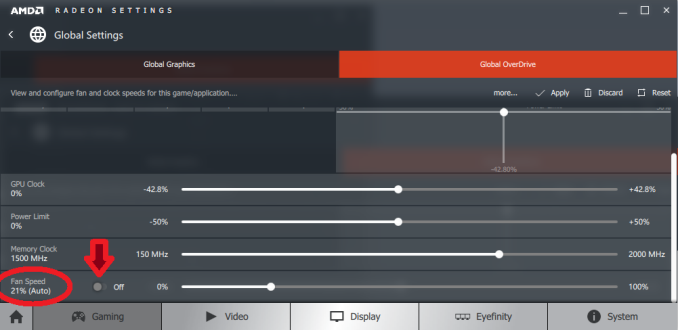
Instructions from /u/Mufinz1337: 'Make sure it states OFF if you want your fan speeds to be automatic'
The problem seems to revolve around system configurations that seem confusing to the initial release of the Crimson software, resulting in an odd initial fan setting that is fixed when the software initialises (although it seems to be a random assortment of GPUs affected, even for those with seemingly straightforward systems). Some users have reported their cards have permanently failed, although the exact causes as to why are unknown at this point. We have seen reports pointing to VRM quality of cheaper cards being poor outside the specified temperature window, though at this point we have not heard of any OEM releasing a statement regarding replacement – users with cards in warranty should under normal circumstances be able to get their cards replaced with their retailer, and it will be up to the retailer/OEM to manage the issue further up the chain with distribution.
For users affected, they can either do the manual fan adjustment each time they boot their system, roll back drivers via DDU, or wait for the driver update later today. We will post links here when we get them.
We are aware of low fan speed reports on select GPUs with Radeon Software Crimson Edition. We intend to publish a hotfix on Monday.
— AMD Radeon Graphics (@AMDRadeon) November 29, 2015
More...
-
11-30-15, 07:17 AM #5526
Anandtech: The Microsoft Band 2 Review
At the end of October in 2014, Microsoft surprisingly released a late night press release about a new device they were launching. It was the Microsoft Band, which is a fitness wearable that was a key component of their Microsoft Health service. It was their first real wearable, and it was packed with sensors to track everything from your heart rate to your sleep quality. At the Microsoft devices event in NYC on October 6th, Microsoft announced an updated version of the Band, known as Band 2. Its goal is to provide even more health insights, while being more comfortable and stylish than the original Band.
More...
-
11-30-15, 08:24 AM #5527
Anandtech: Best Convertible Laptops: Holiday 2015
For our final segment on notebooks, we will take a look at convertibles. We’ve already covered standard notebooks, as well as gaming laptops. This final installment will focus on convertibles. This category sprouted out of nowhere with the release of Windows 8, but it has made some huge strides over the years with better and better devices being released. With Windows 10’s ability to switch the interface depending on which mode you are in, convertibles are now a fully fleshed out member of the notebook family.
I break convertibles down into two different segments. The first are those that are a tablet first, and those are defined by having the CPU and other parts in the display section. Keyboards are an add-on on these devices, and they generally are a better tablet experience, with somewhat compromised keyboards and with the heavy tablet section sitting out over the hinge, they do not have as good of a balance when compared to a traditional notebook. The other segment is ones where the keyboard can flip around underneath the display. As a tablet, they are not as good, since the heavy keyboard section stays attached, but as a regular notebook they have the advantage with balance and generally a better typing experience.
We’ve seen some great additions to the lineup for this year, and with Intel’s updated Skylake platform being used by many. Lower cost devices may turn to Intel’s Cherry Trail or Braswell platforms, which are lower performance Atom cores but with a much lower TDP and greater efficiency.
Tablet devices with attachable keyboards
Budget Convertible: ASUS T100HA
ASUS basically invented this class, with the launch of the original T100 back in 2013. For 2015, ASUS is back with a refresh on their 10.1-inch convertible. It is the T100HA, and it’s now powered by Intel’s Cherry Trail with the x5-Z8500 SoC. This is a quad-core 14 nm processor with a 1.44 Ghz base frequency and 2.24 GHz turbo, and since it is Cherry Trail the power requirements are very low, with it having a TDP of just 2 Watts. ASUS offers two models of this, with a 2 GB memory and 32 GB eMMC offering, as well as a 4 GB memory and 64 GB eMMC model. The latter is a great price, at just $279 USD. With 64 GB and Windows 10, space should be fine for basic tasks. ASUS even includes a USB-C connector on the T100HA. The display is decidedly low resolution, at 1280x800, but that is a 16:10 display for those doing the math. The keyboard and trackpad are small, but for the price, it’s hard to beat the T100HA
Buy ASUS T100HA 4GB/64GB on Amazon.com
Mid-Range: Microsoft Surface 3
The Microsoft Surface 3 is the first of the non-pro models from Microsoft to sport an x86 processor, which opens up the entire Windows software ecosystem to Microsoft’s lower cost tablet. The 10.8-inch display is a wonderful 3:2 aspect ratio, with a resolution of 1920x1280. This makes it a much better tablet than the former 16:9 models, especially in portrait mode. The Surface 3 is also powered by Cherry Trail, but in this case the top end x7-Z8700 model. The base clock is 1.6 GHz and boost jumps to 2.4 GHz. The 2-Watt processor does a decent job running Windows 10, but it still can’t hold a candle to Intel’s Core series. Microsoft has bumped the base storage to 64 GB of eMMC, with 2 GB of memory, or you can jump to 4 GB with 128 GB of eMMC. There is micro SD as well if you need to add a bit more storage, and with the latest Windows 10 updates it’s very easy to use the SD for data or even apps. The Surface 3 has a very premium build quality, with a great magnesium finish, and the included kickstand of Surface has three different stops on the new model. It also adds support for Surface pen, and of course the type cover option to transform it into a laptop. It’s not an inexpensive purchase, but the display and build quality are a step ahead of most of the competition.
Buy Microsoft Surface 3 4GB/128GB on Amazon.com
High-End: Microsoft Surface Pro 4
The latest iteration of the Surface Pro makes some big strides, and distances itself from the competition even further. There have actually been quite a few Surface Pro clones released this year, but it’s going to be a tall task to overcome the incumbent. Pretty much all of the issues with the last generation Surface Pro 3, which was already a great device, have been sorted out with the new model. The processor is now the latest generation Skylake, with options up to the Core i7-6650U with Iris Pro graphics, and if you want fanless, the base model is a Core m3-6Y30. System memory starts at 4 GB, but you can get up to 16 GB on the higher end versions. Storage is now PCIe NVMe with 128 GB as the base offering, and up to a whopping 1 TB is going to be available soon. One issue with the Surface Pro 3 was that it had a tendency to throttle under heavy load, but the new cooling system in the Surface Pro 4 fixes that too. The display in the latest model is a fantastic 267 pixels per inch, with a 3:2 aspect ratio. Even more, the new type cover improves the typing experience immensely, and the larger, smoother, trackpad is now on par with good notebooks. The Surface Pro 4 starts at $899, with prices going way up from there depending on options. It’s not inexpensive, but the Surface Pro 4 delivers.
Buy Microsoft Surface Pro 4 Core i5/8GB/256GB on Amazon.com
Notebook first: 360 degree hinge
14-inch with optional NVIDIA Graphics: Lenovo Yoga 700
Lenovo’s Yoga was the original 360-degree hinge laptop, and it adds a lot of functionality over a traditional notebook by being able to couple touch with the hinge. You gain access to not only the tablet mode, but also tend and stand modes. For late 2015, Lenovo has refreshed the lineup and the Yoga 700 makes our list. It’s a 14-inch notebook, but it packs Skylake processors and even an optional NVIDIA GT 940M GPU inside. The display is a reasonable 1920x1080, which of course includes multi-touch. The Yoga 700 loses out on the weight and thickness battle with Lenovo’s higher end models, but it makes up for that in price. The 3.5 lb notebook starts at just $770 with a Core i5-6200U, and for $900 you can get the Core i7-6500U with double the storage (256 GB vs 128 GB on the base) as well as the GT 940M GPU.
Buy the Lenovo Yoga 700 on Lenovo.com
Beautiful aluminum design: HP Spectre x360
HP released their own version of a convertible notebook this year with the release of the HP Spectre x360. They have recently refreshed it to include Skylake processors too. The HP offers great battery life, as well as a beautiful aluminum finish. The trackpad is enormous, with a much wider model than most devices offer. Although we have not had a chance to review the Spectre, I’ve been using one since April and the build quality is top notch. The HP has a great keyboard too, although I’m not a fan of silver keys with white backlighting since they get washed out in any sort of lighting. The base model offers a 1920x1080 display, and you can also get a 2560x1440 model as well. I would likely stick with the 1080p model for battery life reasons, and the base display is quite good. HP doesn’t break the bank either with their nicely crafted convertible. The HP Spectre x360 starts at just $799 with a Core i5-6200U, 8 GB of memory, and 128 GB of storage.
Buy the HP Spectre x360 on HP.com
High resolution and amazing hinge: Lenovo Yoga 900
Lenovo has once again revamped their Yoga lineup, and the top end of the consumer lineup is now the Yoga 900. This is a successor to the Yoga 3 Pro, and Lenovo looks to fix some of the ailments of that model. The Yoga 3 Pro went for thin and light over pretty much anything, and it did it by using Core M. For the Yoga 900, Lenovo has made it slightly thicker, but by doing so they have been able to move back to the 15-Watt Core processors. They have also increased battery capacity, which is now an impressive 66 Wh. The display is the same 3200x1800 IPS panel, for good and bad. I really hope that Lenovo moves away from this Samsung RGBW Pentile display for future models, since there are plenty of better choices out there now. But still, the overall laptop keeps its thin and light design, along with the beautiful watchband hinge. The 1.3 kg (2.8 lb) convertible is just 14.9 mm (0.59”) thick. You also get USB-C with video out, and the base specifications have gotten a bump. Storage now starts at 256 GB, and can move to 512 GB, and RAM starts at 8 GB and they also offer a 16 GB model. The new Yoga 900 starts at $1200, and goes up to $1400 with 16 GB of memory and 512 GB of storage.
Buy the Lenovo Yoga 900 on Lenovo.com
This wraps up our look at laptops for 2015. It has been a great year for notebooks, with some amazing new models in all categories.
More...
-
11-30-15, 10:01 AM #5528
Anandtech: Correcting Apple's A9 SoC L3 Cache Size: A 4MB Victim Cache
Along with today’s analysis of Chipworks’ A9X die shot, I’m also going to use this time to revisit Apple’s A9 SoC. Based on some new information from Chipworks and some additional internal test data, I am issuing a correction to our original analysis of Apple’s latest-generation phone SoC.
In our original analysis of the A9, I wrote that the L3 cache was 8MB. This was based upon our initial tests along with Chipworks’ own analysis of the physical layout of the A9, which pointed to an 8MB L3 cache. Specifically, at the time I wrote:
However it’s also worth mentioning that as Apple is using an inclusive style cache here – where all cache data is replicated at the lower levels to allow for quick eviction at the upper levels – then Apple would have needed to increase the L3 cache size by 2MB in the first place just to offset the larger L2 cache. So the “effective” increase in the L3 cache size won’t be quite as great. Otherwise I’m a bit surprised that Apple has been able to pack in what amounts to 6MB more of SRAM on to A9 versus A8 despite the lack of a full manufacturing node’s increase in transistor density.As it turns out, 8MB of cache was too good to be true. After a few enlightening discussions with some other individuals, some further testing, and further discussions with Chipworks, both our performance analysis and their die analysis far more strongly point to a 4MB cache. In particular, Chipworks puts the physical size of the TSMC A9 variant’s L3 cache at ~4.5mm2, versus ~4.9mm2 for A8’s L3 cache. Ultimately TSMC’s 16nm FinFET process is built on top of their 20nm process – the metal pitch size as used by Apple is the same with both processes – and this is the limiting factor for the L3 cache SRAM density.
But what is perhaps more interesting is what Apple is doing with their 4MB of L3 cache. An inclusive cache needs to be larger than the previous (inner) cache level, as it contains a copy of everything from the previous cache level. On A8 this was a 4:1 ratio, whereas with A9 this is a 4:3 ratio. One could technically still have an inclusive L3 cache with this setup, but the majority of its space would be occupied by the copy of the A9’s now 3MB L2 cache.Apple SoC Comparison A9X A9 A8 A7 CPU 2x Twister 2x Twister 2x Typhoon 2x Cyclone CPU Clockspeed 2.26GHz 1.85GHz 1.4GHz 1.3GHz GPU PVR 12 Cluster Series7 PVR GT7600 PVR GX6450 PVR G6430 RAM 4GB LPDDR4 2GB LPDDR4 1GB LPDDR3 1GB LPDDR3 Memory Bus Width 128-bit 64-bit 64-bit 64-bit Memory Bandwidth 51.2GB/sec 25.6GB/sec 12.8GB/sec 12.8GB/sec L2 Cache 3MB 3MB 1MB 1MB L3 Cache None 4MB (Victim) 4MB (Inclusive) 4MB (Inclusive) Manufacturing Process TSMC 16nm FinFET TSMC 16nm &
Samsung 14nmTSMC 20nm Samsung 28nm
So what has Apple done instead? Inlight of Chipworks’ reassessment of the A9’s L3 cache size it’s clear that Apple has re-architected their L3 cache design instead.
What I believe we’re looking at here is that Apple has gone from an inclusive cache on A7 and A8 to a victim cache on A9. A victim cache, in a nutshell, is a type of exclusive catch that is filled (and only filled) by cache lines evicted from the previous cache level. In A9’s case, this means that items evicted from the L2 caches are sent to the L3. This keeps recently used data and instructions that don’t fit in the L2 cache still on-chip, improving performance and saving power versus having to go to main memory, as recently used data is still likely to be needed again.
The shift from an inclusive cache to a victim cache allows the 4MB cache on A9 to still be useful, despite the fact that it’s now only slightly larger than the CPU’s L2 cache. Of course there are tradeoffs here – if you actually need something in the L3, it’s more work to manage moving data between L2 and L3 – but at the same time this allows Apple to retain many of the benefits of a cache without dedicating more space to an overall larger L3 cache.
Meanwhile from the software side we can validate that it’s a victim cache by going back to our A9 latency graph. With the exclusive nature of the victim cache, the effective range of the L3 cache on A9 is the first 4MB after the end of the L2 cache; in other words, the L3 cache covers the 3MB to 7MB range in this test. Looking at our results, there’s a significant jump up in latency from 7MB to 8MB. Previously I had believed this to be due to the fact that our testing can’t control everything in the cache – the rest of the OS still needs to run – but in retrospect this fits the data much better, especially when coupled with Chipworks’ further analysis.
Ultimately the fact that Apple made such a significant cache change with A9 is more than I was expecting, but at the same time it’s worth keeping in mind that the L3 cache was only introduced back alongside Cyclone (A7) to begin with. So like several other aspects of Apple’s SoC design, A9 is very much an Intel-style “tock” on the microarchitecture side, with Apple having made significant changes to much more than just the CPU. Though coupled with what we now know about A9X, it does make me wonder whether Apple will keep around the L3 victim cache for A10 and beyond, or if it too will go the way of A9X’s L3 cache and be removed entirely in future generations.
More...
-
11-30-15, 10:01 AM #5529
Anandtech: More on Apple’s A9X SoC: 147mm2@TSMC, 12 GPU Cores, No L3 Cache
Over the Thanksgiving break the intrepid crew over at Chipworks sent over their initial teardown information for Apple’s A9X SoC. The heart of the recently launched iPad Pro, the A9X is the latest iteration in Apple’s line of tablet-focused SoCs. We took an initial look at A9X last month, but at the time we only had limited information based on what our software tools could tell us. The other half of the picture (and in a literal sense, the entire picture) is looking at the physical layout of the chip, and now thanks to Chipworks we have that in hand and can confirm and reject some of our earlier theories.
A9X is the first dedicated ARM tablet SoC to be released on a leading-edge FinFET process, and it’s being paired with Apple’s first large-format tablet, which in some ways changes the rules of the game. Apple has to contend with the realities of manufacturing a larger SoC on a leading-edge process, and on the other hand a larger tablet that’s approaching the size of an Ultrabook opens up new doors as far as space and thermals are concerned. As a result while we could make some initial educated guesses, we’ve known that there would be a curveball in A9X’s design, and that’s something we couldn’t confirm until the release of Chipworks’ die shot. So without further ado:
Die Size: 147mm2, Manufactured By TSMCApple SoC Comparison A9X A9 A8X A6X CPU 2x Twister 2x Twister 3x Typhoon 2x Swift CPU Clockspeed 2.26GHz 1.85GHz 1.5GHz 1.3GHz GPU PVR 12 Cluster Series7 PVR GT7600 Apple/PVR GXA6850 PVR SGX554 MP4 RAM 4GB LPDDR4 2GB LPDDR4 2GB LPDDR3 1GB LPDDR2 Memory Bus Width 128-bit 64-bit 128-bit 128-bit Memory Bandwidth 51.2GB/sec 25.6GB/sec 25.6GB/sec 17.1GB/sec L2 Cache 3MB 3MB 2MB 1MB L3 Cache None 4MB 4MB N/A Manufacturing Process TSMC 16nm FinFET TSMC 16nm &
Samsung 14nmTSMC 20nm Samsung 32nm
First off, Chipworks’ analysis shows that the A9X is roughly 147mm2 in die size, and that it’s manufactured by TSMC on their 16nm FinFET process. We should note that Chipworks has only looked at the one sample, but unlike the iPhone 6s there’s no reason to expect that Apple is dual-sourcing a much lower volume tablet SoC.
At 147mm2 the A9X is the second-largest of Apple’s X-series tablet SoCs. Only the A5X, the first such SoC, was larger. Fittingly, it was also built relative to Apple’s equally large A5 phone SoC. With only 3 previous tablet SoCs to use as a point of comparison I’m not sure there’s really a sweet spot we can say that Apple likes to stick to, but after two generations of SoCs in the 120mm2 to 130mm2 range, A9X is noticeably larger.
Some of that comes from the fact that A9 itself is a bit larger than normal – the TSMC version is 104.5mm2 – but Apple has also clearly added a fair bit to the SoC. The wildcard here is what yields look like for Apple, as that would tell us a lot about whether 147mm2 is simply a large part or if Apple has taken a greater amount of risk than usual here. As 16nm FinFET is TSMC’s first-generation FinFET process, and save possibly some FPGAs this is the largest 16nm chip we know to be in mass production there, it’s reasonable to assume that yields aren’t quite as good as with past Apple tablet SoCs. But whether they’re significantly worse – and if this had any impact on Apple’s decision to only ship A9X with the more expensive iPad Pro – is a matter that we’ll have to leave to speculation at this time.
Finally, it's also worth noting just how large A9X is compared to other high performance processors. Intel's latest-generation Skylake processors measure in at ~99mm2 for the 2 core GT2 configuration (Skylake-Y 2+2), and even the 4 core desktop GT2 configuration (Intel Skylake-K 4+2) is only 122mm2. So A9X is larger than either of these CPU cores, though admittedly as a whole SoC A9X contains a number of functional units either not present on Skylake or on Skylake's Platform Controller Hub (PCH). Still, this is the first time that we've seen an Apple launch a tablet SoC larger than an Intel 4 core desktop CPU.
GPU: PVR 12 cluster Series7
One thing we do know is that Apple has invested a lot of their die space into ramping up the graphics subsystem and the memory subsystem that feeds it. Based on our original benchmark results of the A9X and the premium on FinFET production at the moment, I expected that the curveball with A9X would be that Apple went with a more unusual 10 core PowerVR Series7 configuration, up from 6 cores in A9. Instead, based on Chipworks’ die shot, I have once again underestimated Apple’s willingness to quickly ramp up the number of GPU cores they use. Chipworks’ shot makes it clear that there are 12 GPU cores, twice the number found in the A9.
In Imagination’s PowerVR Series7 roadmap, the company doesn’t have an official name for a 12 core configuration, as this falls between the 8 core GT7800 and 16 core GT7900. So for the moment I’m simply calling it a “PowerVR 12 cluster Series7 design,” and with any luck Imagination will use a more fine-grained naming scheme for future generations of PowerVR graphics.
In any case, the use of a 12 core design is a bit surprising since it means that Apple was willing to take the die space hit to implement additional GPU cores, despite the impact this would have on chip yields and costs. If anything, with the larger thermal capacity and battery of the iPad Pro, I had expected Apple to use higher GPU clockspeeds (and eat the power cost) in order to save on chip costs. Instead what we’re seeing is a GPU that essentially offers twice the GPU power of A9’s GPU. We don’t know the clockspeed of the GPU – this being somewhat problematic to determine within the iOS sandbox – but based on our earlier performance results it’s likely that A9X’s GPU is only clocked slightly higher than A9’s. I say slightly higher because no GPU gets 100% performance scaling with additional cores, and with our GFXBench Manhattan scores being almost perfectly double that of A9’s, it stands to reason that Apple had to add a bit more to the GPU clockspeed to get there.
Meanwhile looking at the die shot a bit deeper, it’s interesting how spread out the GPU is. Apple needed to place 6 clusters and their associated shared logic on A9X, and they did so in a decidedly non-symmetrical manner. On that note, it’s worth pointing out that while Apple doesn’t talk about their chip design and licensing process, it’s highly likely that Apple has been doing their own layout/synthesis work for their PowerVR GPUs since at least the A4 and its PowerVR SGX 535, as opposed to using the hard macros from Imagination. This is why Apple is able to come up with GPU configurations that are supported by the PowerVR Rogue architecture, but aren’t official configurations offered by Imagination. A8X remains an especially memorable case since we didn’t initially know Series6XT could scale to 8 GPU cores until Apple went and did it, but otherwise what we see with any of these recent Apple SoCs is what should be a distinctly Apple GPU layout.
Moving on, the memory controller of the A9X is a 128-bit LPDDR4 configuration. With twice as many GPU cores, Apple needs twice as much memory bandwidth to maintain the same bandwidth-to-core ratio, so like the past X-series tablet SoCs, A9X implements a 128-bit bus. For Apple this means they now have a sizable 51.2GB/sec of memory bandwidth to play with. For a SoC this is a huge amount of bandwidth, but at the same time it’s quickly going to be consumed by those 12 GPU cores.
L3 Cache: None
Finally let’s talk about the most surprising aspect of the A9X, its L3 cache layout. When we published our initial A9X results we held off talking about the L3 cache as our tools pointed out some extremely unusual results that we wanted to wait on the Chipworks die shot to confirm. What we were seeing was that there wasn’t a section of roughly 50ns memory latency around the 4MB mark, which in A9 is the transfer size at which we hit its 4MB L3 victim cache.
What Chipworks’ die shot now lets us confirm is that this wasn’t a fluke in our tools or the consequence of a change in how Apple’s L3 cache mechanism worked, but rather that there isn’t any L3 cache at all. After introducing the L3 cache with the A7 in 2013, Apple has eliminated it from the A9X entirely. The only cache to be found on A9X are the L1 and L2 caches for the CPU and GPU respectively, along with some even smaller amounts for cache for various other functional blocks.
The big question right now is why Apple would do this. Our traditional wisdom here is that the L3 cache was put in place to service both the CPU and GPU, but especially the GPU. Graphics rendering is a memory bandwidth-intensive operation, and as Apple has consistently been well ahead of many of the other ARM SoC designers in GPU performance, they have been running headlong into the performance limitations imposed by narrow mobile memory interfaces. An L3 cache, in turn, would alleviate some of that memory pressure and keep both CPU and GPU performance up.
One explanation may be that Apple deemed the L3 cache no longer necessary with the A9X’s 128-bit LPDDR4 memory bus; that 51.2GB/sec of bandwidth meant that they no longer needed the cache to avoid GPU stalls. However while the use of LPDDR4 may be a factor, Apple’s ratio of bandwidth-to-GPU cores of roughly 4.26GB/sec-to-1 core is identical to A9’s, which does have an L3 cache. With A9X being a larger A9 in so many ways, this alone isn’t the whole story.
What’s especially curious is that the L3 cache on the A9 wasn’t costing Apple much in the way of space. Chipworks puts the size of A9’s 4MB L3 cache block at a puny ~4.5 mm2, which is just 3% the size of A9X. So although there is a cost to adding L3 cache, unless there are issues we can’t see even with a die shot (e.g. routing), Apple didn’t save much by getting rid of the L3 cache.
Our own Andrei Frumusanu suspects that it may be a power matter, and that Apple was using the L3 cache to save on power-expensive memory operations on the A9. With A9X however, it’s a tablet SoC that doesn’t face the same power restrictions, and as a result doesn’t need a power-saving cache. This would be coupled with the fact that with double the GPU cores, there would be a lot more pressure on just a 4MB cache versus the pressure created by A9, which in turn may drive the need for a larger cache and ultimately an even larger die size.
As it stands there’s no one obvious reason, and it’s likely that all 3 factors – die size, LPDDR4, and power needs – all played a part here, with only those within the halls of One Infinite Loop knowing for sure. However I will add that since Apple has removed the L3 cache, the GPU L2 cache must be sizable. Imagination’s tile based deferred rendering technology needs an on-chip cache to hold tiles in to work on, and while they don’t need an entire frame’s worth of cache (which on iPad Pro would be over 21MB), they do need enough cache to hold a single tile. It’s much harder to estimate GPU L2 cache size from a die shot (especially with Apple’s asymmetrical design), but I wouldn’t be surprised of A9X’s GPU L2 cache is greater than A9’s or A8X’s.
In any case, the fact that A9X lacks an L3 cache doesn’t change the chart-topping performance we’ve been seeing from iPad Pro, but it means that Apple has once more found a way to throw us a new curveball. And closing on that note, we’ll be back a bit later this month with our full review of the iPad Pro and a deeper look at A9X’s performance, so be sure to stay tuned for that.
More...
-
12-01-15, 08:05 AM #5530
Anandtech: AMD Announces FirePro W4300: Low Profile FirePro
With the slower release cadence for AMD’s FirePro professional cards, we tend to only hear from the FirePro group once or twice per year. And with the last update of the desktop FirePro lineup taking place back in August of 2014, the company has been due for some kind of update to their lineup to close out 2015. To that end, today the company is announcing the latest addition to the FirePro lineup, the FirePro W4300.
After last year’s more sizable refresh, today’s announcement is a lower-key update for AMD. AMD has only released one GPU in the last year, the high-end Fiji, which we’re not expecting to see released as a FirePro workstation card due to its limited 4GB of memory. Instead, today’s announcement is focused on updating the lower-end of the FirePro W lineup with a single new card to cover what AMD sees as product/performance gap in their lineup.
The new card is the FirePro W4300. Based on AMD’s Bonaire GPU, the W4300 is essentially a performance bump for this segment of AMD’s lineup, offering improved performance and better features than the Cape Verde based W4100 did in the same performance and size profile.AMD FirePro W Series Specification Comparison AMD FirePro W5100 AMD FirePro W4300 AMD FirePro W4100 AMD FirePro W2100 Stream Processors 768 768 512 320 ROPs 16 16 16 8 Core Clock 930MHz 930MHz 630MHz 630MHz Memory Clock 6Gbps GDDR5 6Gbps GDDR5 5.5Gbps GDDR5 1.8Gbps DDR3 Memory Bus Width 128-bit 128-bit 128-bit 128-bit VRAM 4GB 4GB 4GB 2GB Double Precision 1/16 1/16 1/16 1/16 TDP 75W 50W 50W 26W Form Factor Full Low Profile Low Profile Low Profile GPU Bonaire Bonaire Cape Verde Oland Architecture GCN 1.1 GCN 1.1 GCN 1.0 GCN 1.0 Display Outputs 4 4 4 2
From a technical standpoint the W4300 is essentially a smaller and lower power version of AMD’s existing W5100. Like its older sibling, the W4300 ships with 768 stream processors enabled, clocked at 930MHz, and is paired with 4GB of GDDR5 running at 6Gbps. The difference between the two cards at the GPU level is that while the W5100 was a 75W card, the W4300 brings this down to just 50W. AMD tells us that the improvement in power consumption comes from better leveraging their PowerTune technology, allowing them to further control the card’s power consumption while also ultimately imposing a 50W limit on total power consumption (with an ASIC TDP of around 35W).
AMD hasn’t provided any benchmarks comparing the two – their focus is how it compares to NVIDIA’s lineup – but the resulting performance should be similar to W5100. Otherwise compared to the W4100, performance should be significantly higher thanks to the 50% increase in stream processors and memory bandwidth, not to mention Bonaire’s more intelligent implementation of PowerTune, which plays a big part in these 50W cards. Otherwise from an architectural standpoint, W4300 improves on W4100 by adding support for AMD’s FreeSync, the company’s name for their implementation of DisplayPort Adaptive-Sync. To date AMD’s focus on FreeSync has been with consumer gaming, however as vendors are starting to ready workstation-class displays with support for the technology, AMD is now ramping up their promotion of and support for FreeSync in workstations. To which the W4300 is now the lowest-end of the FirePro W cards to support FreeSync.
At the other end of the spectrum, the W4300 is now AMD’s most powerful low profile/small form factor FirePro card. Small form factor PCs have become increasingly important in the workstation space – these days a mini-ITX sized board can support a desktop processor, a high-performance M.2 PCIe SSD, and a workstation video card – so AMD has further improved on the amount of performance they offer for small form factor workstations. Similarly, this is why the W4300 is a 50W card as opposed to a 75W card, as these smaller systems have limited heat dissipation capabilities.
Within AMD’s lineup the W4300 is being pitched in the same general category as the W5100 and W4100, which is to say the focus is on lower-end CAD/CAM setups. Overall AMD sees these types of cards being suitable for many graphics-centric tasks, while the higher-end cards like the W7100 and above would be for the large-scale rendering (e.g. movie production) and combined graphics/compute workloads where the GPU is being leveraged for executing and drawing simulations.
Finally, the W4300 will be launching with an MSRP of $379, though AMD tells us that the street price for the card is more likely to be $299. The primary competition for the W4300 will be NVIDIA’s Quadro K1200, which is based on the company’s GM107 GPU and like the W4300 is the top low-profile card in NVIDIA’s product stack. As is typically the case with the FirePro lineup, AMD is aiming to beat NVIDIA on performance for the price; at $299 the W4300 should be anywhere between 10% and 57% faster than the K1200, though it goes without saying that most gains will depend on the nature of the workload and the models being used.
Gallery: FirePro W4300





More...
Thread Information
Users Browsing this Thread
There are currently 51 users browsing this thread. (0 members and 51 guests)





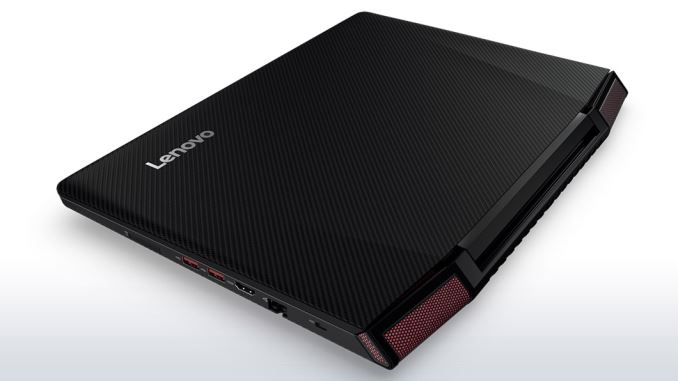
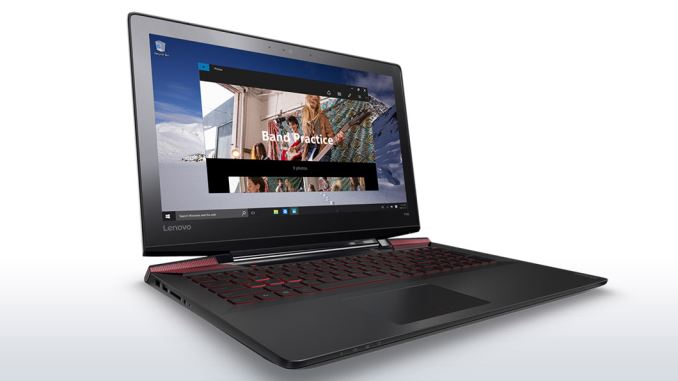
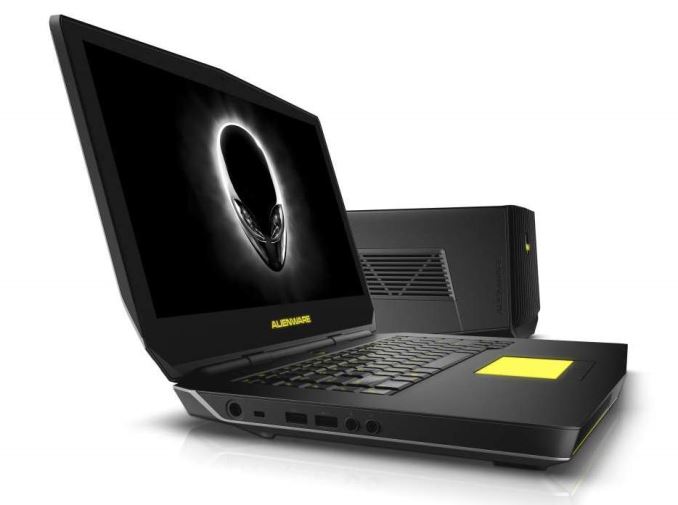
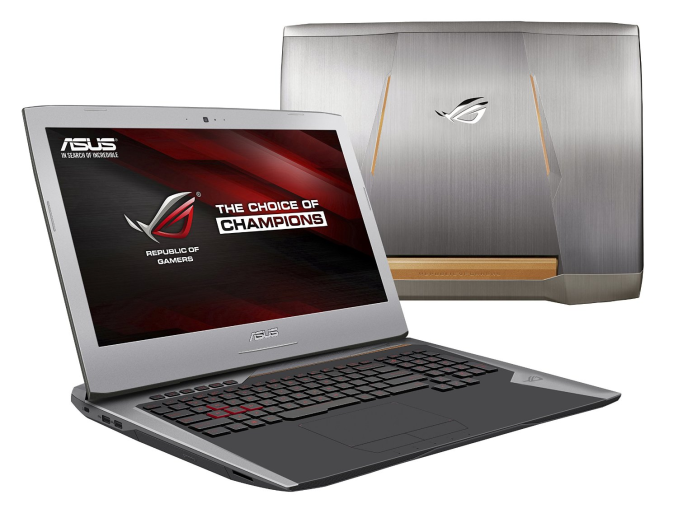
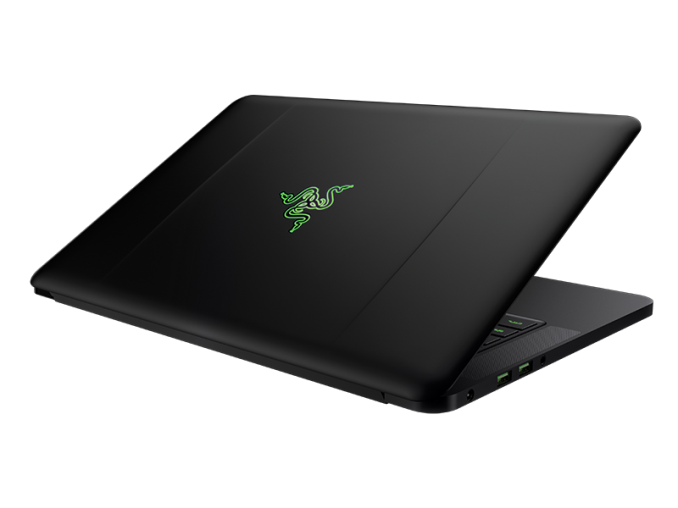
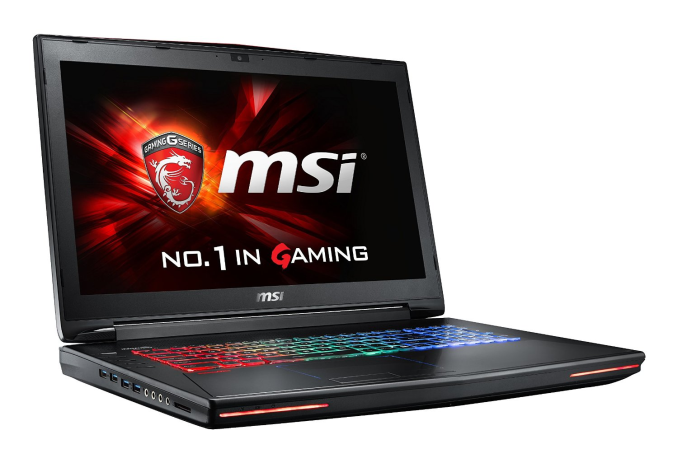
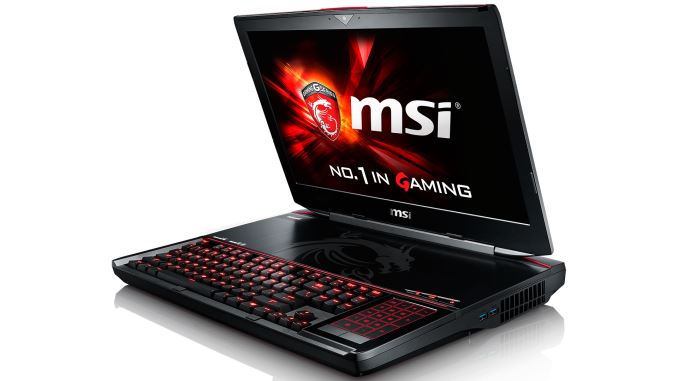

 Quote
Quote
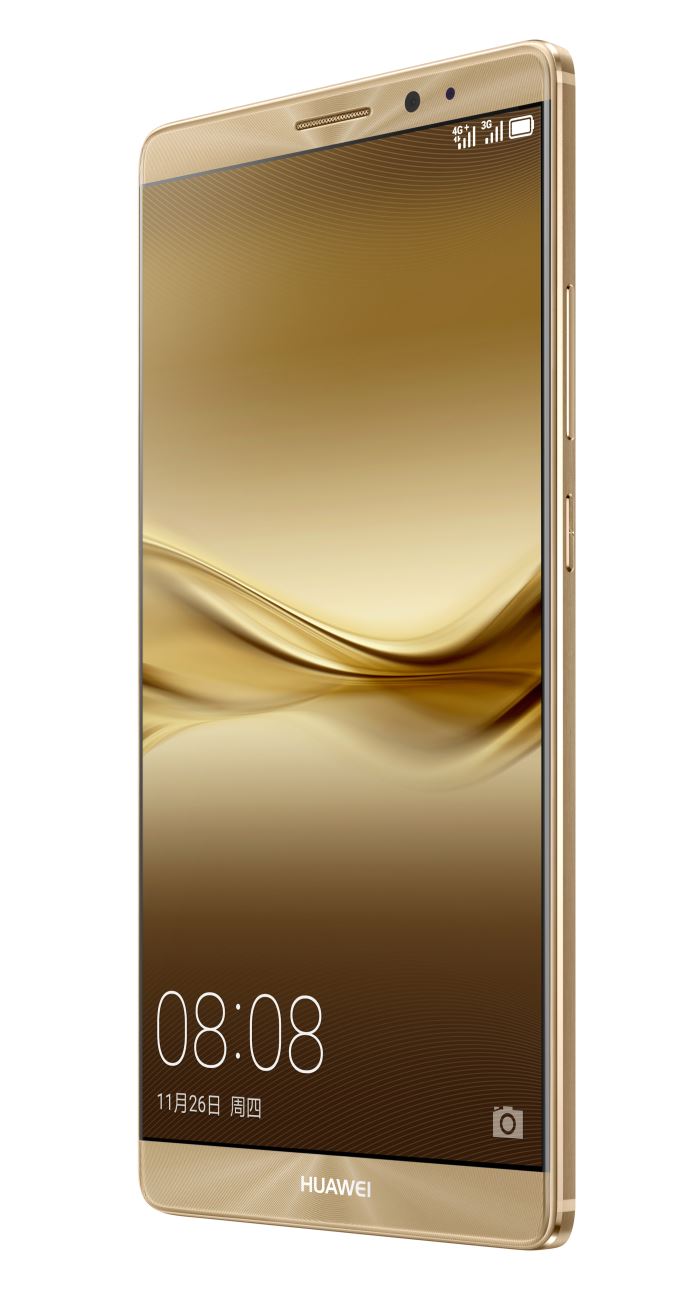
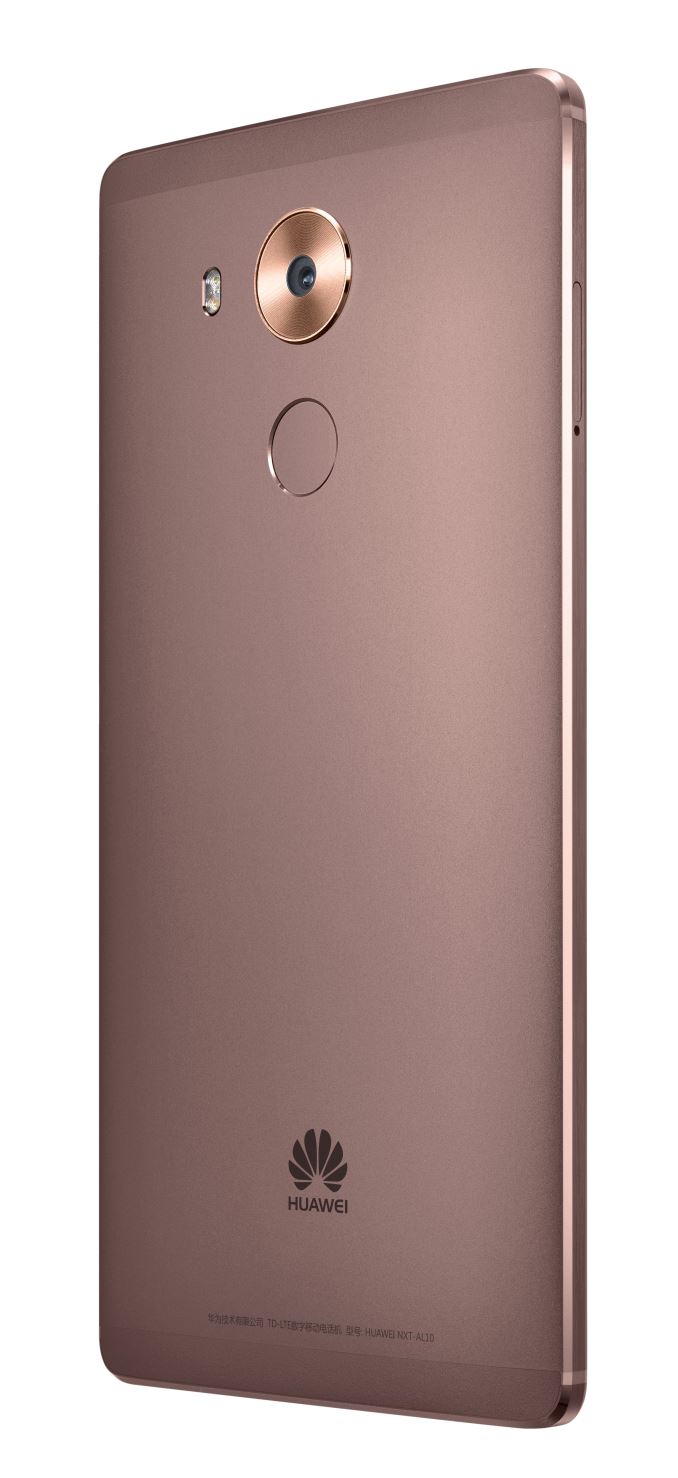

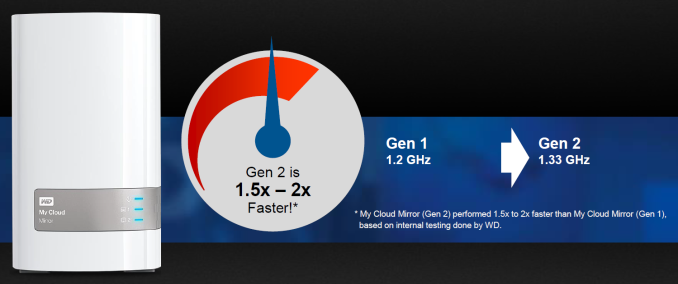
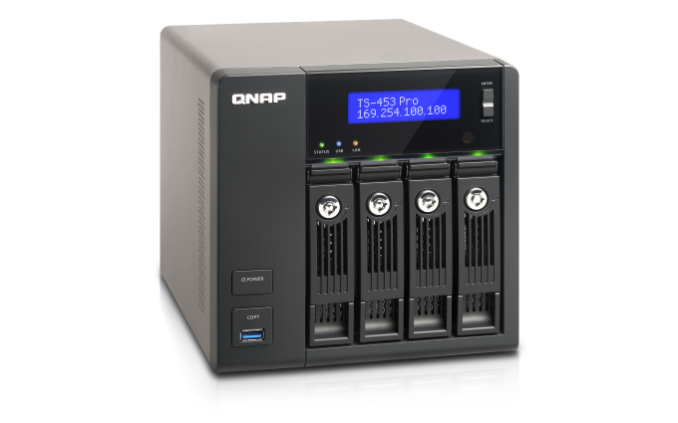


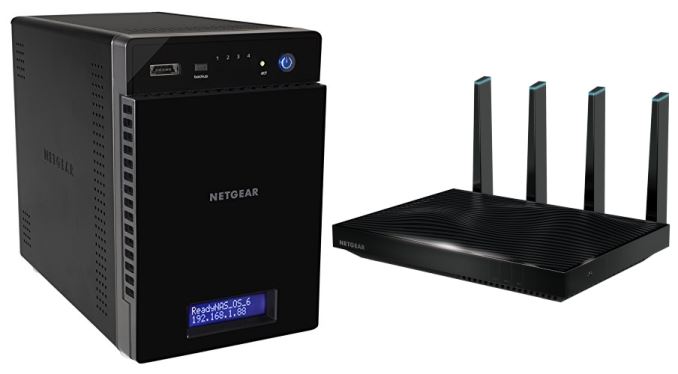

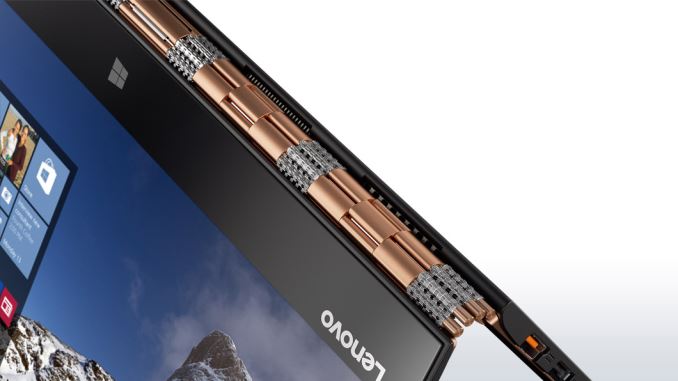

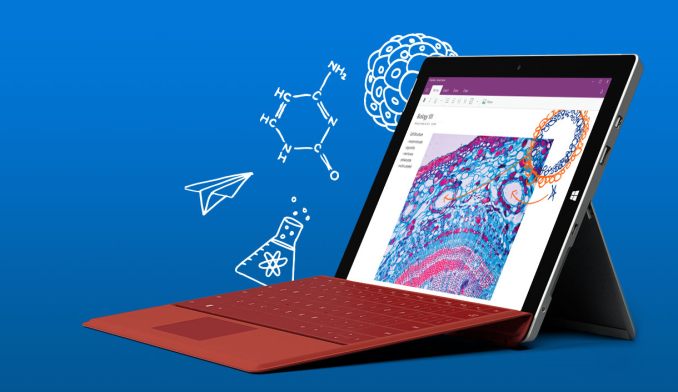
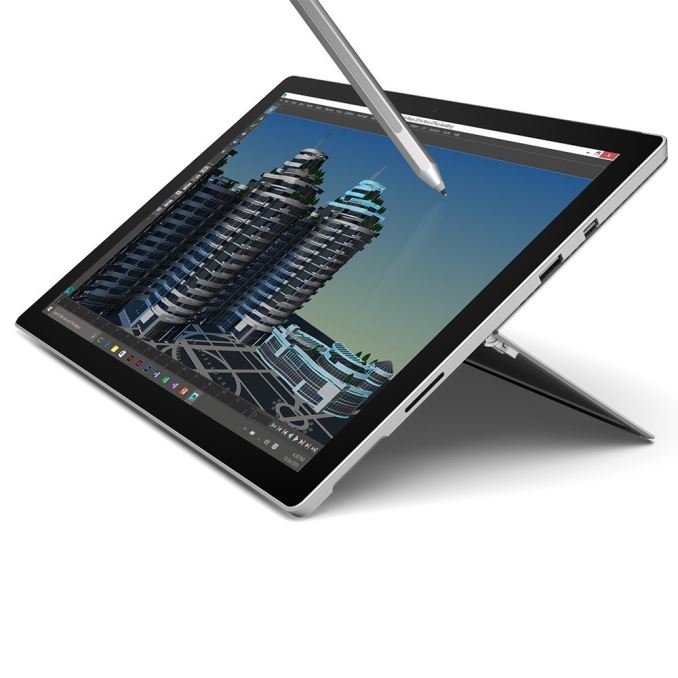
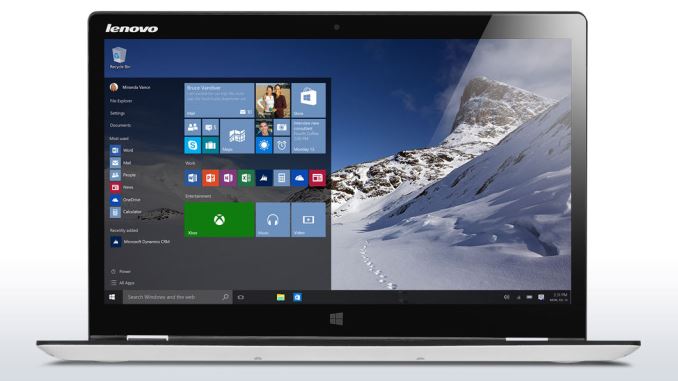
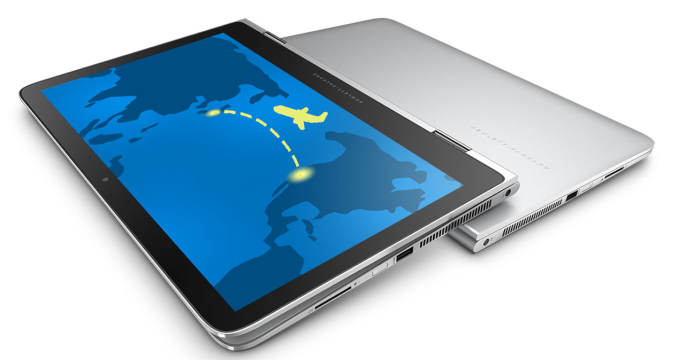
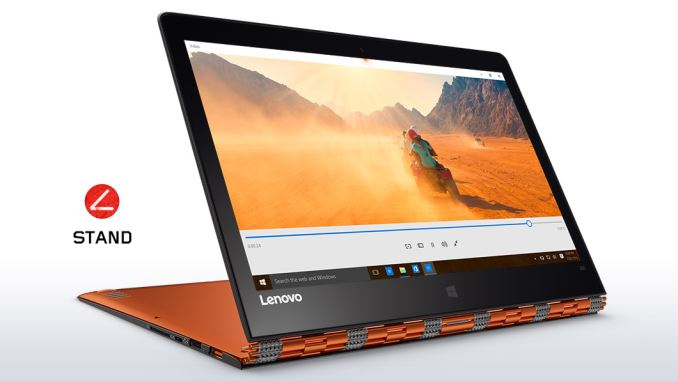

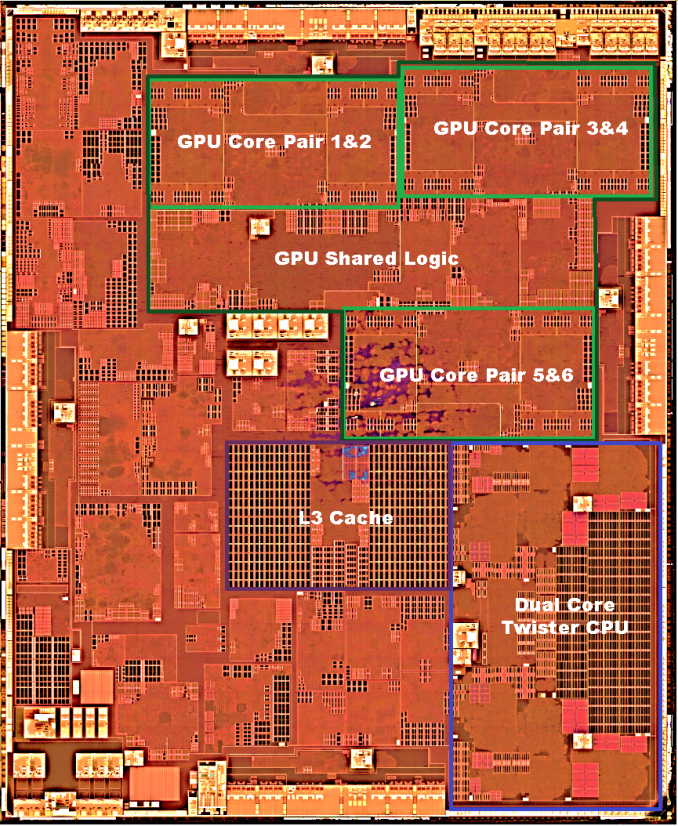
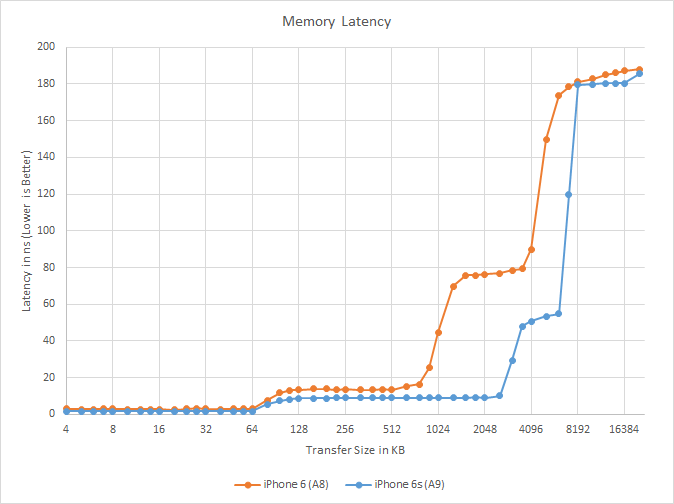
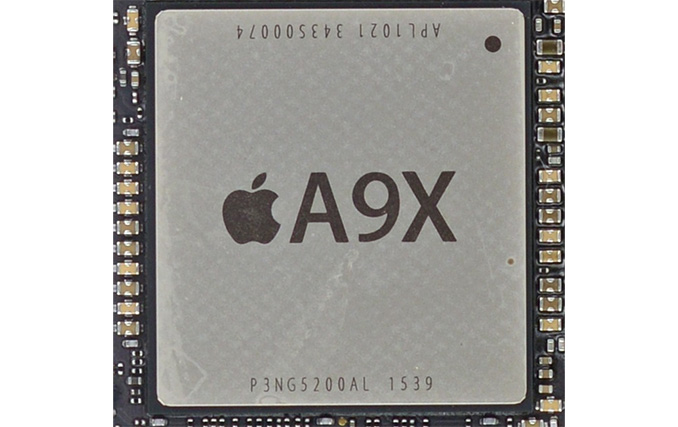
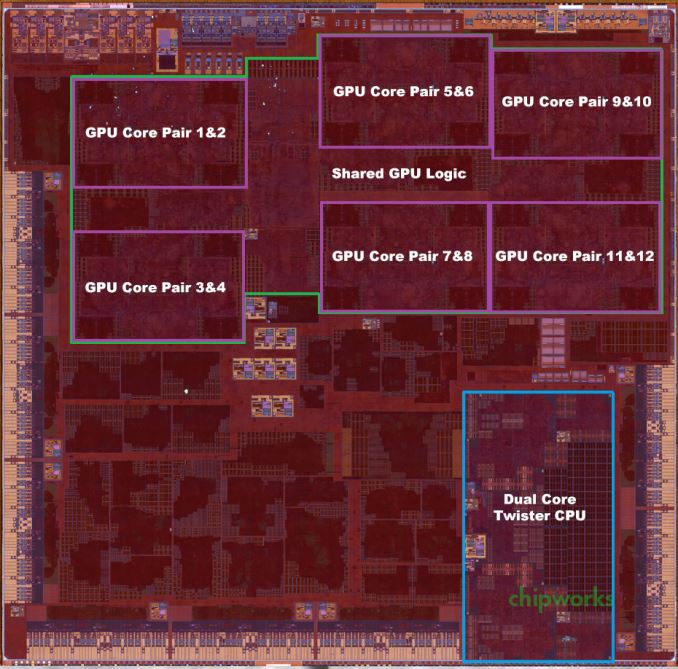
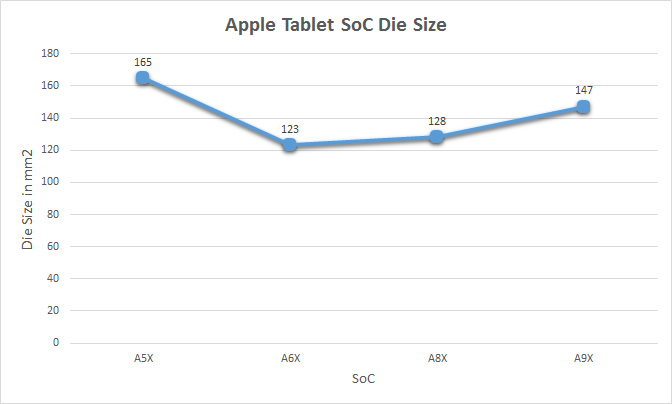
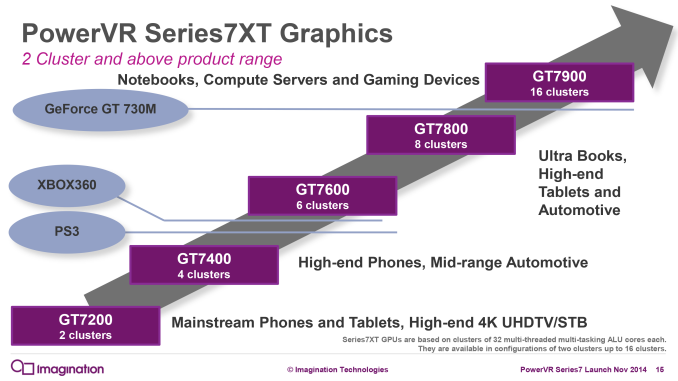
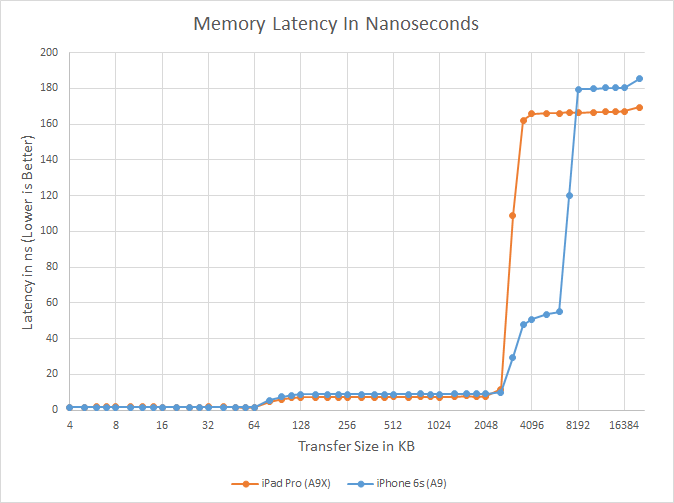
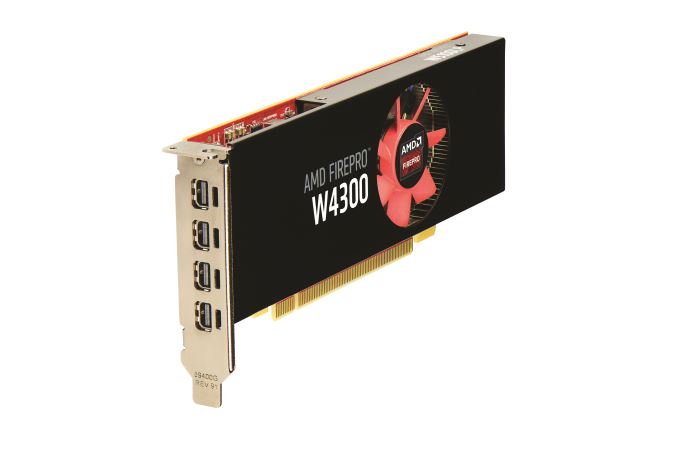





















Bookmarks